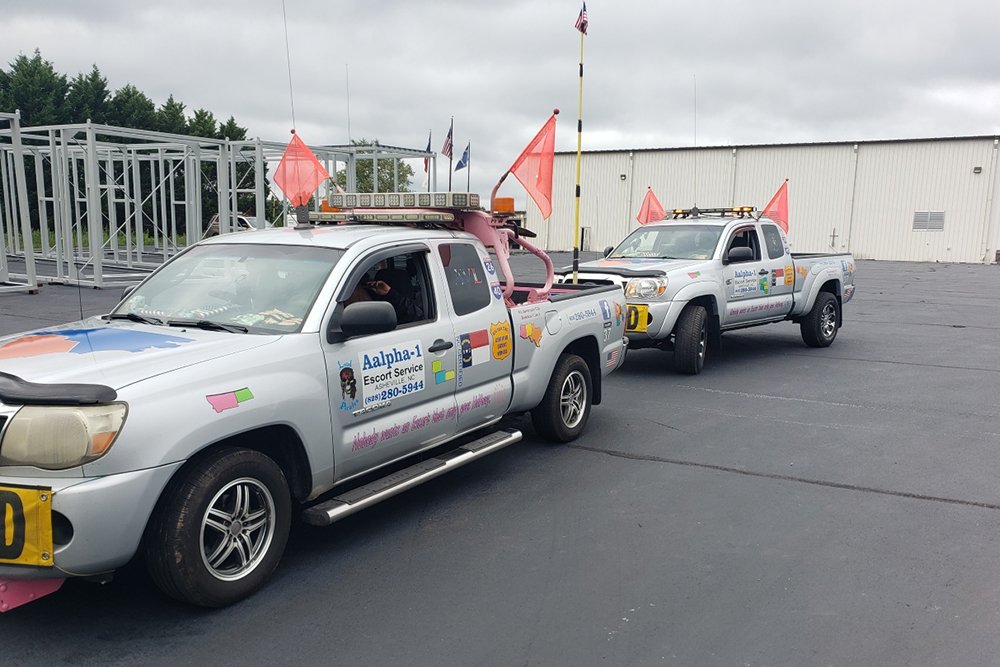When it comes to transporting oversized loads in the United States and Canada, pilot cars play a crucial role in ensuring the safety of both the transported cargo and other drivers on the road. Also known as escort vehicles or flag cars, pilot cars accompany trucks hauling oversize loads to alert, guide, and protect other motorists.
Why Are Pilot Cars Necessary?
Transporting oversized loads such as large equipment, prefabricated homes, or wind turbine blades poses significant challenges due to their size, weight, and dimensions. These loads can obstruct visibility, encroach on adjacent lanes, and require special considerations during transportation. Pilot cars are essential to mitigate these challenges by providing advance warning to other drivers and assisting the oversize load truck driver in navigating the road safely.
Responsibilities of Pilot Cars
Pilot car drivers have specific responsibilities to ensure the safe transport of oversize loads. Some of the key duties of pilot cars include:
-
Advance Route Survey: Before the transport journey begins, pilot cars conduct a route survey to identify potential obstacles, low clearances, road construction, and other hazards that may pose risks to the oversize load.
-
Warning Signs and Flags: Pilot cars are equipped with warning signs, flags, and lights to alert other drivers of the upcoming oversize load. These indicators help to prepare motorists for the wide or tall load that is approaching.
-
Traffic Control: Pilot cars control traffic flow around the oversize load, ensuring that the truck and its cargo have sufficient space to maneuver safely. They may block intersections, guide the truck during turns, and communicate with the driver via radio.
-
Communication: Effective communication between pilot cars and the oversize load truck driver is critical. Pilot car drivers relay information about road conditions, upcoming obstacles, and necessary maneuvers to the truck driver to prevent accidents and delays.
-
Emergency Response: In the event of an emergency, such as a breakdown or a road incident involving the oversize load, pilot cars provide assistance, secure the area, and coordinate with emergency services to ensure the safety of everyone involved.
Regulations for Pilot Cars
Both the United States and Canada have regulations governing the use of pilot cars during the transport of oversize loads. These regulations aim to standardize procedures, enhance safety measures, and minimize disruptions to regular traffic. Some key regulations include:
-
Certification: Pilot car drivers must undergo training and certification to ensure they have the necessary skills and knowledge to perform their duties effectively.
-
Vehicle Requirements: Pilot cars must meet specific vehicle requirements, such as displaying oversized load signs and flags, having amber lights for visibility, and equipped with two-way radios for communication.
-
Escort Vehicle Spacing: Regulations dictate the required distance between the pilot car and the oversize load truck, ensuring adequate warning to other drivers and facilitating safe navigation on the road.
-
Flagging Procedures: Pilot cars are responsible for flagging intersections, indicating lane changes, and communicating with the oversize load truck driver using standardized flagging procedures.
In the transportation industry, pilot cars play a vital role in ensuring the safe and efficient transport of oversize loads in the United States and Canada. By providing warning signals, traffic control, communication, and emergency response services, pilot cars contribute to reducing the risks associated with hauling large and heavy cargo on public roads. Adherence to regulations and best practices for pilot car operations is essential to promoting road safety and preventing accidents during oversize load transportation.

